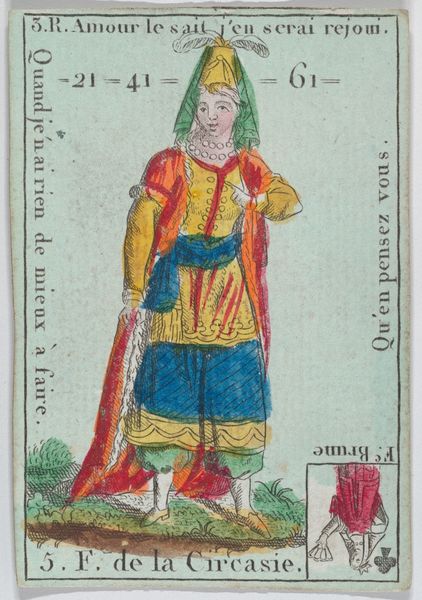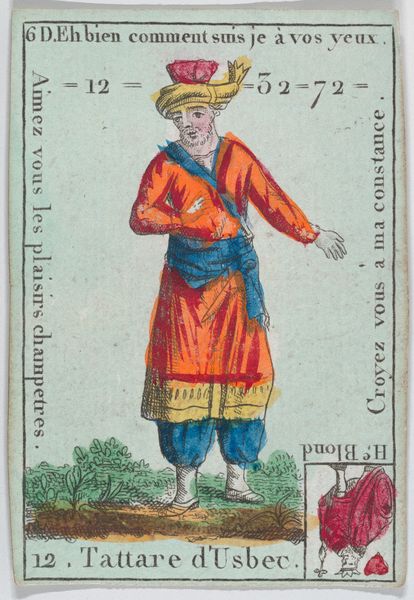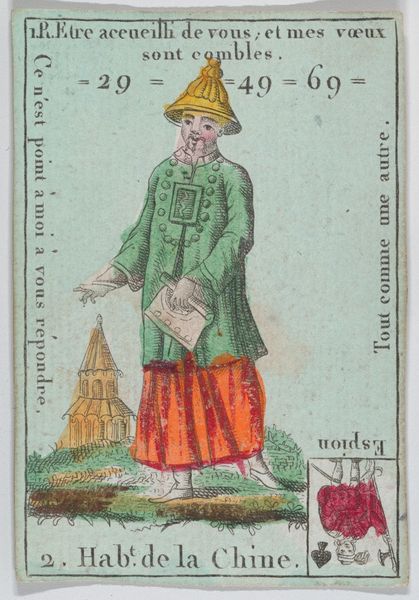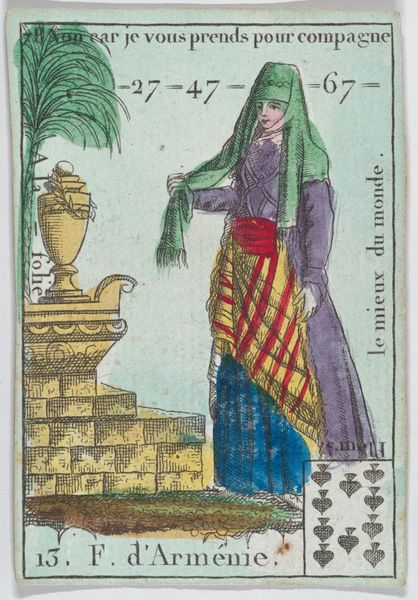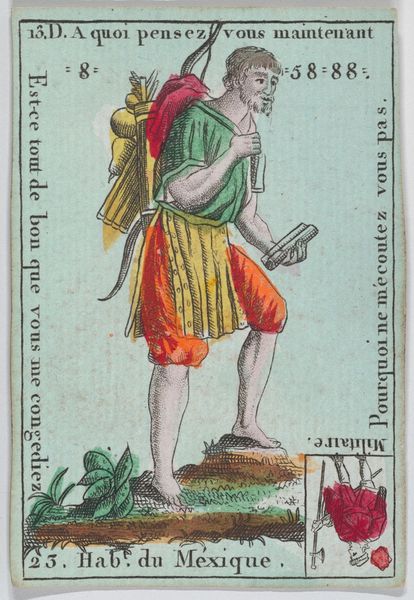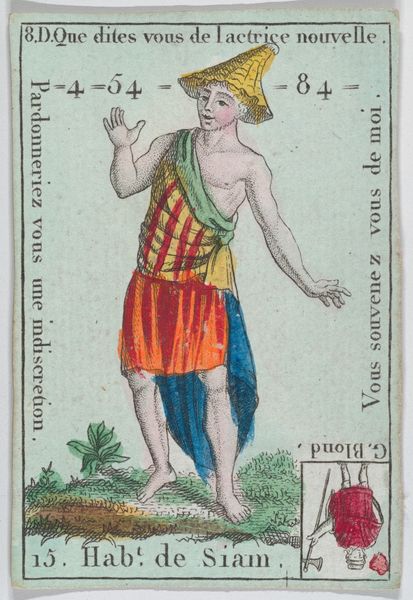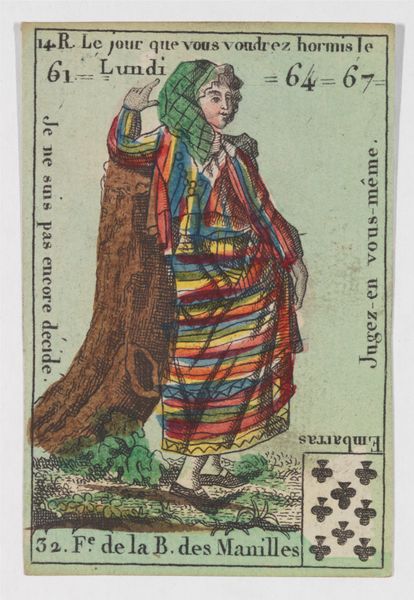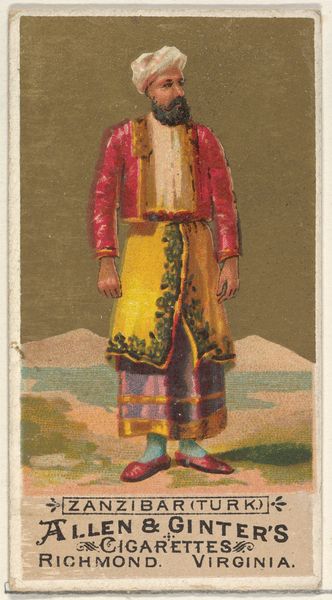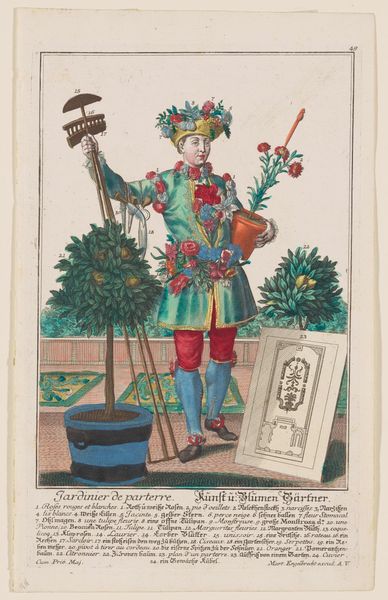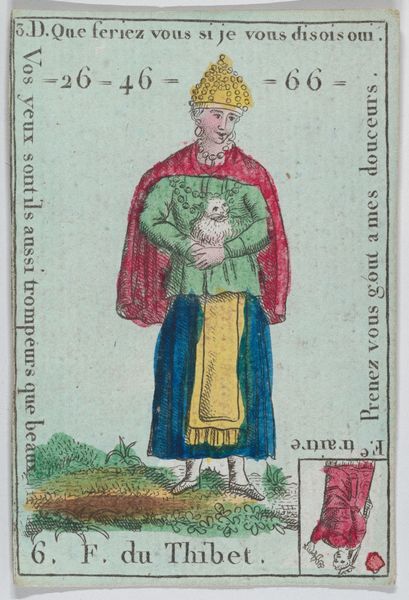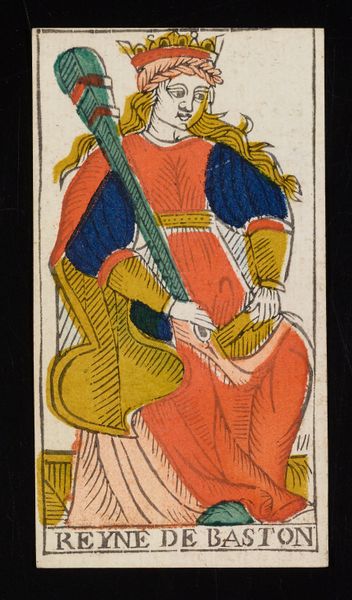
drawing, print, paper, engraving
#
portrait
#
drawing
# print
#
paper
#
genre-painting
#
engraving
Dimensions: 3 3/16 × 2 1/16 in. (8.1 × 5.3 cm)
Copyright: Public Domain
Curator: Here we have a rather intriguing print, a playing card dating to the 18th century and part of a series called "Jeu d'Or," attributed to an anonymous artist. The card is entitled "F. du Mogol". Editor: It strikes me as playful, but almost mocking in its presentation. There’s an element of fantasy mixed with caricature. The figure seems deliberately exaggerated, almost like a paper doll. Curator: Precisely. "Mogol" in this context, refers to the Mughal Empire in India, and this card reflects Europe’s fascination—and perhaps misunderstanding—of distant cultures. The elaborate dress, rendered with a kind of whimsical precision, carries a lot of meaning. Consider the turban, the layering of fabrics, and the gesture of presenting what appears to be a fan. Editor: Yes, it’s a loaded presentation. The “exotic” is rendered as spectacle, devoid of context. Note how the clothing, rendered with what looks like gold print, is not only “othered”, but displayed in a setting akin to a collection, pinned down like a butterfly. The French phrases bordering the image–snippets about love, and asking what you want–feel deliberately ironic against this backdrop. Is it about romance, or acquisition, or simple fetishisation? Curator: These were popular parlour games. Cards as maps of a globalizing world and mirrors reflecting the prejudices of their time. Even the choice of engraving, allows for wider distribution, embedding those attitudes within the culture. Editor: And those number pairings! What’s the equation it implies between wealth, desire, and empire? It’s not merely descriptive, it's subtly prescriptive, telling a particular story about Europe’s relationship to the “Orient.” We see, framed as entertainment, the normalization of colonial fantasies. Curator: It's a reminder of how deeply intertwined representation is with power dynamics, even within something as seemingly innocuous as a deck of cards. It invites a more critical lens toward seemingly neutral cultural objects. Editor: Absolutely. This card isn’t just about playing games. It reflects the dangerous games of empire-building, and cultural appropriation, repackaged for entertainment. Looking closely reminds us that those games continue, just in new guises.
Comments
No comments
Be the first to comment and join the conversation on the ultimate creative platform.
